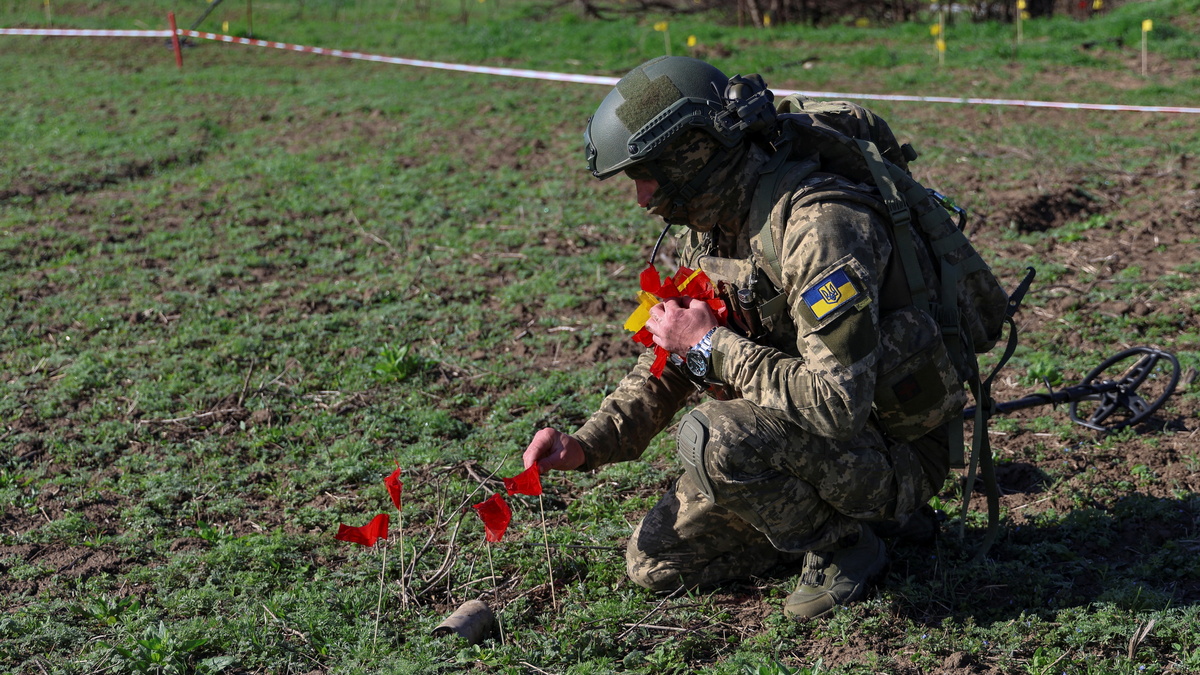Ukraine has accused Russia of firing ‘cluster munitions’ at its energy facilities.
Ukraine’s President Volodymyr Zelensky, who said the attacks came overnight, called it a “despicable escalation” by Moscow.
“In several regions, strikes with cluster munitions were recorded, and they targeted civilian infrastructure,” Zelensky said in a post on Telegram.
“This is a very despicable escalation of Russian terrorist tactics.”
The US in July 2023 had sent cluster bombs to Ukraine as part of an $800 million package.
But what happened? What are cluster munitions? Why are they controversial?
Let’s take a closer look:
What happened?
Russia unleashed its second big attack on Ukraine’s energy infrastructure this month on Thursday, cutting power to more than 1 million people in the west, south, and center of the country, officials said.
Damage to the energy and other critical infrastructure was reported by officials in Lviv, Volyn, Rivne and Khmelnytskyi regions in the west, the Mykolayiv and Kherson regions in the south, and Zhytomyr region in the centre.
President Volodymyr Zelenskyy said Russia used cruise missiles with cluster munitions in Thursday’s attack, calling it a “despicable escalation”.
“In several regions, Kalibr strikes with cluster munitions were recorded, specifically on civilian infrastructure. These cluster parts make it much more difficult for our rescuers and energy workers to eliminate the consequences of the impact, and this is a very vile escalation of Russian terrorist tactics,” Zelenskyy was quoted as saying by The Telegraph.
“Each such attack proves that air defence systems are needed now in Ukraine , where they save lives, and not in storage bases. This is especially important in the winter, when we have to protect our infrastructure from targeted Russian strikes. We are constantly working with partners to have more power to defend and timely delivery now and full implementation of agreements particularly on air defence is what is most needed,” Zelenskyy added.
Ukrainian air defence shot down 79 out of 91 Russian missiles and downed 35 drones, the air force said.
A source in the energy sector source said Ukraine disconnected several nuclear power units from the network amid the Russian attack.
Ukraine relies on nuclear generation for more than 50 per cent of its electricity supplies.
The capital Kyiv was targeted but all missiles or drones were downed, officials said.
The attack reinforced fears of long power cuts during the winter months as temperatures across Ukraine hover around zero.
“Another Russian missile and drone barrage, targeting civilians and energy grid, causing power outages across Ukraine,” Foreign Minister Andrii Sybiha said on X.
Ukrainian officials said it was the 11th major strike on the Ukrainian energy system since March. Russia had knocked out about half of Ukraine’s available generating capacity, damaged the distribution system and forced long blackouts.
Lviv governor Maksym Kozytskyi said Thursday’s Russian strikes cut off electricity to about 523,000 people in the western region on Ukraine’s border with Poland.
Power supplies were also cut to nearly 500,000 people in the Volyn and Rivne regions, the governors said. Electricity supplies were also disrupted in Khmelnytskyi and Zhytomyr regions, officials said.
Regional officials across the country said they were turning on generators to ensure emergency heat and water supplies to hospitals, schools and other critical facilities during bitter winter weather.
The loud hum of generators was also heard in Kyiv city as many Ukrainian small and medium businesses rely on generators for their electricity supplies during the blackouts.
What are cluster munitions?
The international Convention on Cluster Munitions defines a cluster munition as “a conventional munition that is designed to disperse or release explosive submunitions, each weighing less than 20 kilograms.”
According to CSIS, cluster munitions can be of three types – artillery shells, rockets, or bombs.
In simple terms, it is a bomb that breaks apart while in the air and releases smaller bomblets – also known as submunitions – over a large area.
They can carry dozens of even hundreds of bomblets.
As per CSIS, the standard US submunition is called dual-purpose improved conventional munition (DPICM).
A 155 mm artillery shell carries 88 submunitions (M483A1) or 76 in the longer-range M864.
They are designed to target tanks, equipment and troops, as per Al Jazeera.
According to The New York Times, they were first used during World War II.
They are particularly effective against dug-in ground troops in trenches and fortified positions, as per BBC.
Ukraine had been asking the US for them as they are extremely effective against infantry, artillery, and vehicle convoys, as per CSIS.
Why are they controversial?
Because of their impact on the civilian populace.
Cluster munitions are designed to explode on impact.
Unfortunately, they have what is known as a high ‘dud’ rate. Many of them simply don’t go off when they land.
As per BBC, this happens when the bomblets hit wet or soft ground.
The outlet reported that Russian cluster munitions have a “dud rate” of 40 per cent compared to the overall dud rate of 20 per cent.
The Pentagon claims its own cluster bomblets have a paltry dud rate of less than 3 per cent.
Regardless, on the whole they are said to historically have the highest failure rate of all weapons, according to The New York Times.
So many of the bomblets just lay there on the ground. For years in some instances.
Just waiting to be moved or picked up – which they sometimes are by children, who mistake them for toys.
Cluster munitions are banned in over 100 countries, as per Al Jaazera.
Many nations, including UK, France and Germany signed the Convention on Cluster Munitions in 2010 which outlawed their use.
However, major powers like US and Russia are not signatories to this treaty.
Washington claims it wants to keep the right to use them in ‘combat emergencies,’ as per CSIS.
The US last used cluster munitions during the 2003 invasion of Iraq, as per Al Jazeera.
Washington stopped their production in 2008.
With inputs from agencies
)